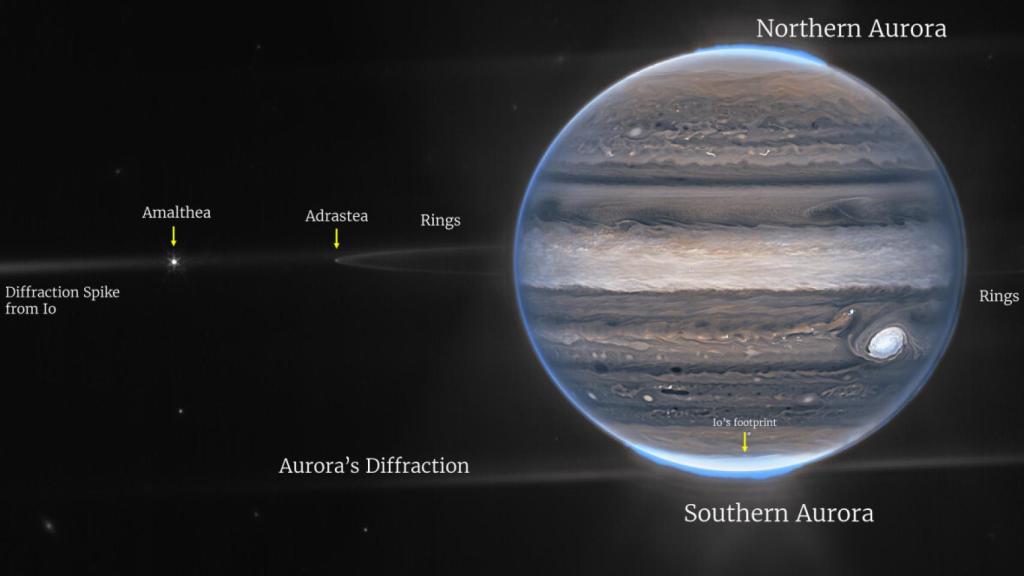Every month it spends traveling through space, the James Webb Telescope manages to surprise with its work. After sending one of the deepest pictures of the universe, the probe now shows the planet Jupiter in all its glory. NASA and ESA, involving Spanish researchers, shared two images where you can see, along with the planet’s rings, details such as its atmosphere, satellites and other galaxies.
[Cinco claves para entender el James Webb: el prodigio de la ingeniería que revela los misterios del cosmos]
“Honestly, we really didn’t expect it to be this good,” marveled astronomer Imke de Pater, professor emeritus at the University of California, Berkeley, who led the Jupiter observations. in cooperation with teams from Europe. Ricardo Hueso of the University of the Basque Country in Spain is one of the people responsible for processing these photos.
The two images come from observations made with the telescope’s NIRCam infrared camera, which involves collecting details that are different from what Jupiter is used to seeing and that had to be colored artificially. James Webb provides information on the storms of the planet and its various regions as explained by the experts in the statement.
your atmosphere
The first thing that stands out at first glance from the images of the planet are the bluish colors, which contrast with the orange tones that Jupiter usually has in all the images that have been shared by it so far. This is because the telescope observe light in the infrared range, not the visible range. The photos are artificially colored in blue, white, green, yellow and orange, according to the French-American research team, to highlight the features and not show the true color of the planet.
In one of the images offered by NASA, the focus is on the atmosphere of the planet with its storms and bright auroras. The great hero is Jupiter’s Great Red Spota storm large enough to engulf the Earth is seen in intense brightness surrounded by other smaller storms.

Jupiter photographed by James Webb
omicron
“The brightness here indicates high altitude, so the Great Red Spot has high-altitude haze, as does the equatorial region,” said Heidi Hamel, an interdisciplinary scientist at Webb. They consider that Numerous bright white patches and streaks may be high-altitude cloud tops resulting from condensed convective storms.
That way they can also be seen with a different filter than yellow and green, like for example fogs swirl around the north and south poles. A third blue filter shows light reflected from a deeper underlying cloud.
satellites and galaxies
In the image, you can see Jupiter’s signature rings, “a million times darker than the planet,” they say. Two small moons called Amalthea and Adrasthea can also be located. More background, the fuzzy blobs would be other galaxies. “It is truly remarkable that we can see details of Jupiter along with their rings, small satellites and even galaxies in one image,” analyzes Imke de Pater.

Jupiter with its rings and moons
omicron
Telescope data sent by James Webb to Earth does not arrive in order, it is necessary to process the data into calibrated files for scientific analysis. after, scientists translate information into images like these while they investigate. NASA collaborates with other agencies such as ESA (European Space Agency) and CSA (Canadian Space Agency) with projects that also involve Spanish researchers.
Judy Schmidt of Modesto California is the primary processor of these images, but also has collaborated with Ricardo Huesowho studies planetary atmospheres at the University of the Basque Country in Spain and who worked on the image showing small moons and galaxies.